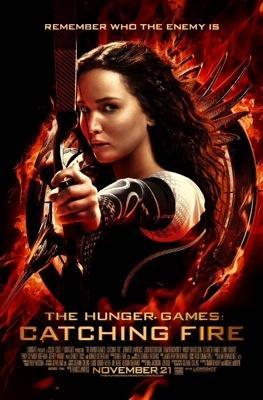
Catching Fire, the second part to The Hunger Games trilogy, opened last week just in time for the big Thanksgiving movie rush. Of particular interest to writers is the big question of how to treat the middle part of a trilolgy. While not the focus here, I always stand on two rules when it comes to trilogies:
1. Each book should stand alone. It should have it’s own beginning, middle, and end with a resolution to the current story.
2. The first and second books should leave open only the minor questions. In the case of Hunger Games, we were left with Haymitch’s warning to Katniss that the Capital would not be pleased with her act of rebellion. If Collin’s had chosen not to write the next book, we would not have been dissapointed. She wrote that warning to give us just enough to return. In the case of Catching Fire, the open issues were larger. At this point the author has committed herself to writing all three, because we would not be satisfied with that ending. The Empire Strikes Back ended almost identically. Like Collins, though, George Lucas knew by this point that he had a hit and had committed himself to the third part.
That should be a good takeaway for novice authors. If you have a trilogy in mind, make sure that first book can stand on its own. That way, if a publisher tells you it didn’t have enough sales to continue, you can drop the project without ticking off too many of your new fans. If a publisher commits to part 2, you can be feel pretty safe in assuming part 3 will be picked up as well, so you have more freedom to leave more open questions at the end of part 2.
Okay? That’s all I’ll say on the issue of the trilogy. I plan on taking this same route, but book one of my trilogy is being plotted as if I will never follow up with a second part. It’s just the safe way to proceed.
Catching Fire
Onto Catching Fire. As promised, I want to break down the film to its major story elements, which should be nearly identical to what Collin’s did in the novel and what we should do in our novels.
Inciting incident. Troops in the village. We’re given a hint that something is amiss when extra troops and a new (and nasty) head peacekeeper shows up. The capstone is when President Snow shows up in Katniss’ home to give her a not-so-veiled threat to make sure her love story is convincing and that it’s up to her to restrain the uprising in the districts.
Set-up. Katniss and Peeta go on tour and we see that their lives are not their own. They must continue to play this game forever. We’re also given more foreshadowing of the rebellion brewing in the districts.
Plot point 1 or point of no return. The quarter quell is announced. Katniss and Peeta are to return to the games.
Mid-point. While there was no point of deep reflection, I’m going to call it at the time when Haymitch tells Katniss to “remember who the enemy is” while she’s in the arena. Clearly, he’s telling her that she needs to look outward, toward the evil capital, and not just focus on killing off her fellow tributes.
Plot point 2. This came a little late I think, past the 75% mark as is standard. Katniss is attacked by an ally, Johanna Mason. Katniss is suddenly alone and uncertain who she can trust. All this happens as her team is setting up a major booby trap for the career tributes.
Dark night of the soul. Katniss hits bottom immediately. She goes back to the lightning tree to find Peeta gone and another ally unconcious. She believes she’s been betrayed and is alone. All is lost.
Climax. Katniss realizes what the game plan is, to defeat the game maker and the capital. She risks her own life to take down the force field surrounding the arena.
Final scene. Katniss is airlifted out in a hovercraft, only to discover that it’s actually part of the rebellion. The game maker is part of the rebel force and she’s being whisked off to District 13. The fate of Peeta is unknown and District 12 has been blown off the map. Again, major questions are left unresolved, much different than the first book and movie of the trilogy. But note the similarities between this ending and the last scene of The Empire Strikes Back. You know you’ll be back for part three, and so does the author.
What could have been better
I felt through both the novels and films that Katniss had a flat character arc. While outwardly she makes the right choices to defeat the enemy, inwardly she shows little change. This becomes even more apparent in the third book of the trilogy, where Katniss should undergo a huge change from the opening of the first book. I believe that is the primary reason Mockinjay got mixed reviews. She begins the series as a dark character only interested in survival and, it seems to me, that’s how she ends the series. I understand that Hollywood is splitting the last book into two movies. This is one of those rare times when I hope they make some major changes and improve the story.
These are the major points we should watch for when we view a movie. We should also look for foreshadoing, symbolism, the “save the cat” moment to build audience empathy with the protogaonist, and other tricks of the trade. I highly recommend you read Save the Cat. By understanding the screenwriters process, you have a better chance of breaking down the structure of a film and transferring that knowledge to your own writing.
How about you? What did you take away from the film that may help in your own writing process?
